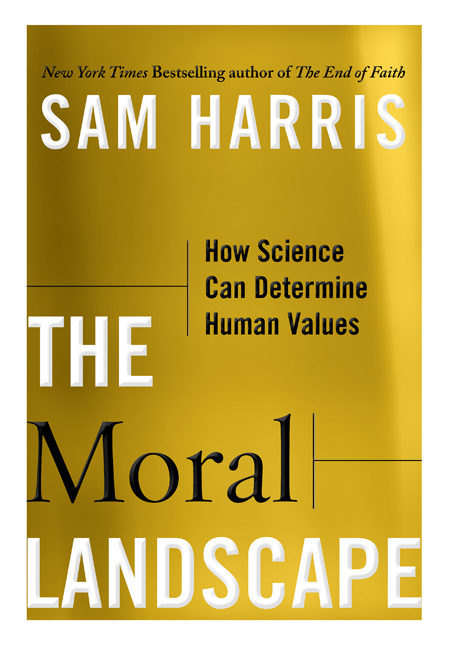By Grant Steves
 The Moral Landscape, by Sam Harris, ©2010, 304 pages, Free Press.
The Moral Landscape, by Sam Harris, ©2010, 304 pages, Free Press.In two forthcoming books, by Patricia Churchland (Braintrust) and Joshua Greene (unknown publisher), there will be a discussion of neuroscience and morality. Their research parallels in time Sam Harris’ research for The Moral Landscape. In this review I will reference their research to compare and contrast it with Harris’ views.
Sam Harris has published another thought-provoking book. With his
doctorate completed in the field of neuroscience, he has taken his
research and presented it in a very readable and well argued book.
It is to his credit that he states clearly how he believes a science of morality could be developed. The two criteria used are well-being and consciousness. Both terms are elusive concepts to define. In defining well-being he asks us to compare it to physical health. We know what ‘good’ physical health is, but we also know, as does Harris, that the standards change. That, however, should not prevent us from understanding it scientifically, according to him. His presentation reminds me of the Supreme Court’s attempt to regulate pornography. The justices said they would know it when they saw it. Harris’ well-being appears to have that same subjective element in it, i.e., it is identified in the eye of the beholder. Harris gives examples to clarify his answer. Most would agree that genital mutilation is not done to enhance well-being. However, he does not illustrate this idea with a more mundane example – we are left with the question, “Could he?”
If we were to accept his argument and definition of well-being, we are still left with his concept of consciousness. What is consciousness? Is it an awareness of self, and our role in a society?
Harris’ presentation is persuasive. He simplifies his points for a general audience. In this book he seemingly becomes the expert because of the reader’s ignorance. If we are not schooled in neuroscience, we can not successfully refute his points, but we should not completely accept his points, either. We must rely on others authorities to evaluate his arguments.
It is at this point that I would appeal to the works of the previously mentioned authors. Churchland, a neurophilosopher, has argued (in Brain-Wise, 2002 p. 133) that “theories about certain things and definitions as to what in the world count as those things evolve together, hand in hand. Firm, explicit definitions become available only fairly late in the game, as the science that embeds them firms up and matures.” She presented this in a chapter on consciousness. Unlike Harris, she is more cautious and is clearer about the need for more research. In this same text, she briefly comments on morality. She does not find that to be an area where science will prevail. In her latest book, Braintrust: What Neuroscience Tells Us About Morality (release date March 21, 2011) she indicates that moral philosophers will have much to learn (factually) from neuroscience, but neuroscience will not take the place of moral philosophers. It is the learning from one another that will allow both to advance in their understanding.
Joshua Greene, in his forthcoming book, plans to “reveal our moral thinking for what it is: a complex hodgepodge of emotional responses and rational (re)constructions, shaped by both genetic and cultural influences, that do some things well and other things extremely poorly. My hope is that by understanding how we think, we can teach ourselves to think better, i.e., in ways that better serve the needs of humanity as a whole.” His studies at Harvard, along with his colleague Marc Hauser (Moral Minds) do not appear to endorse the position taken by Sam Harris.
For example, it is clear that Harris has attempted to make the barrier between ‘is’ and ‘ought’ (naturalistic fallacy) disappear. Greene, however, states (Neuroscience, V.4, Oct. 2003, p. 847), “…I am skeptical of attempts to derive moral principles from scientific facts. I agree with proponents of naturalized ethics that scientific facts can have profound moral implications, and that moral philosophers have paid too little attention to relevant work in the natural sciences.”
Professor Churchland has stated it in terms of the ‘how’ of science vs. the ought of moral philosophy. However, she does not appear to accept the stronger Harris position.
I endorse Harris’ book without hesitation. It is very readable. It should get your mind ready for the forthcoming books by Churchland and Greene.

